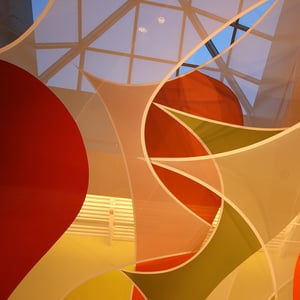
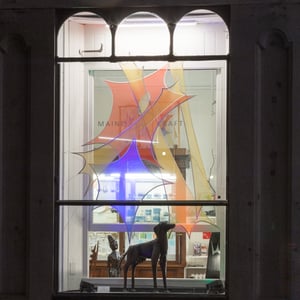
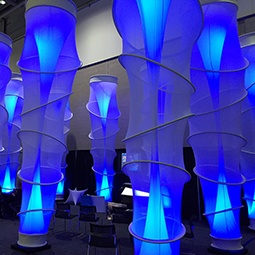
Stretch mesh fabrics can be a lot of fun to play with. Their soft and semi-transparent nature makes them an ideal medium for layering light and graphics. And the interplay between layers can be designed to create a captivating three-dimensional visual experience. The trick is in how the mesh fabric is illuminated, and how well (or not) the fabric reflects that light.
Think of a screen door. Have you ever noticed that the screen is black? Were it white, it would reflect a lot of light and would not appear transparent. Likewise, we see through a screen better during the day, when it’s light outside, than we do at night, when it’s dark outside and light inside. Where light is applied and reflected back to the viewer is where the eye is drawn.
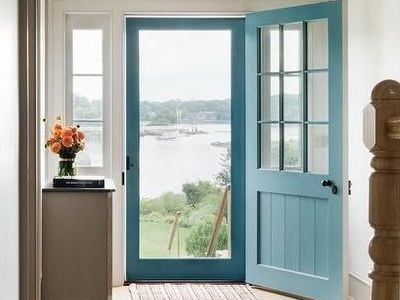
These same principles apply when designing with stretch mesh fabrics.
If we want a mesh layer to be transparent, we use black. Where we want it to be translucent, we use white. To make an illuminated mesh layer appear opaque, we keep the scene behind in darkness. To make this same layer become transparent, we illuminate the scene behind. We see this layered technique in theater, when a Sharkstooth fabric scrim is used to create a backdrop scene that can dissolve to reveal a scene upstage.
When designing with graphics in layers, playing with these attributes of lighting, reflectivity, and transparency, enables us to produce a three-dimensional visual effect—a scene with depth, movement, and translucence.
In this photo below, we have multi-layered fabric structures featuring a solid band of white cutting across a black mesh with graphics. Note how the black mesh absorbs light, letting you see through to layers beyond. Whereas, the white mesh almost turns opaque from certain angles as it reflects light back to your eye. Similarly, the graphics stand out against the black mesh—visible, floating in space, in interplay with each other.
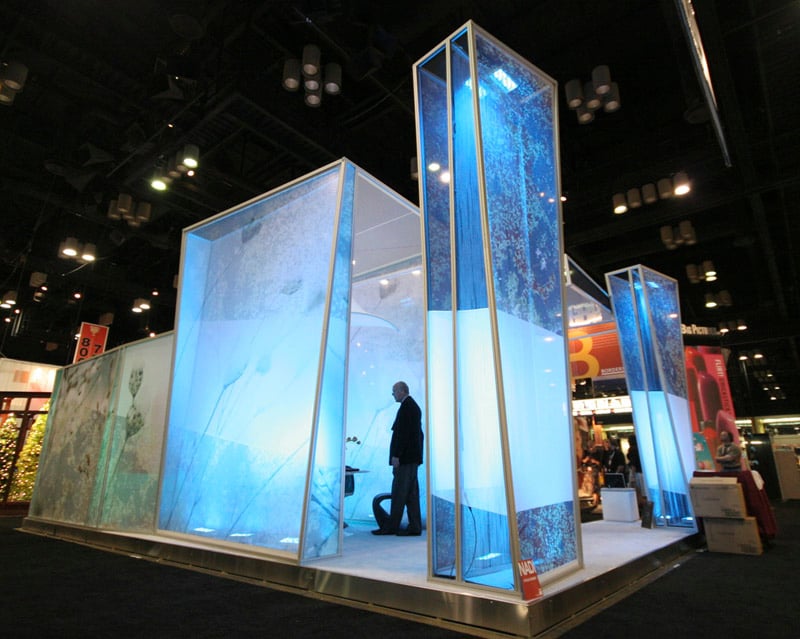
This video of our stretch fabric "aquarium" gives you an idea of how layered graphics can give an image depth and suggest movement. To create this effect, we pulled the elements of an underwater scene apart, printing the turtle, several fish, and some coral on the front and middle layers of black mesh so you can see through to the underwater background behind, which is printed on a solid polyester stretch fabric. Press PLAY to see the turtle swim.
For this award-winning luminaire, designed with Planeta Design Group, a single layer of white stretch mesh unifies the elements of the installation into a cohesive fixture while diffusing light — filling the lighting coffer with a translucent glow — and extending visibility of the double-sided graphics panels to any orientation in the room.
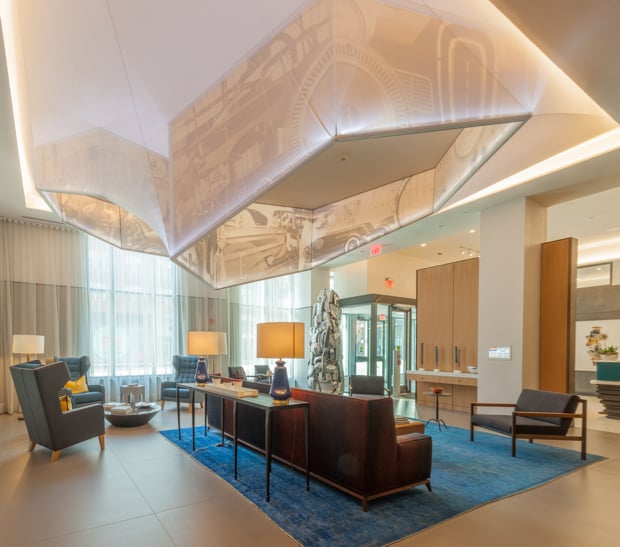
Transformit’s sculptural fabric elements all employ form, color, and light to tell a story. That story could be the mood of an event, the acoustics of a room, the energy of a stage, or the purpose of a brand. Designing with stretch mesh lets us introduce visual intrigue into that narrative.
Let us know how we can help you to tell your story.